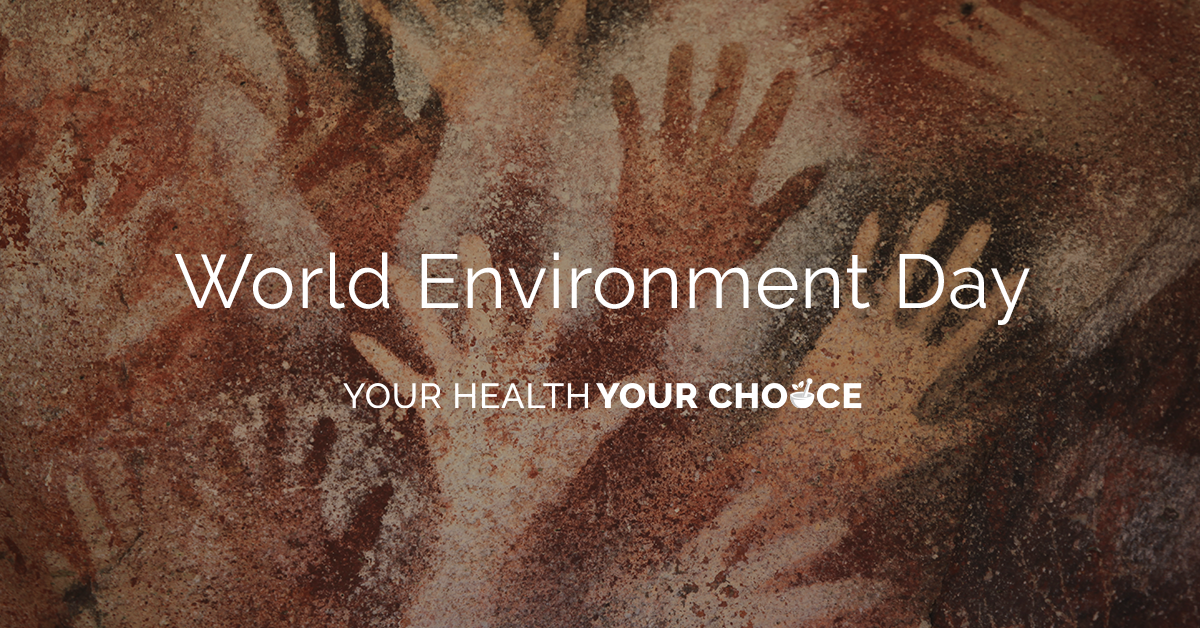World Environment Day 2020 – Nature and our health, are they interdependent?

Human health and the environment
The interrelationships between global communities and the natural environment and the importance of environmental health to human health are widely acknowledged, but not always prioritised.
Indigenous cultures have been reliant on traditional plant medicine for millennia – knowledge closely tied to the natural environment, being shaped and passed on through many generations. However, imminent environmental challenges associated with climate change and globalisation pose a deep threat to the safekeeping and utilisation of this traditional medicine knowledge base. [1]
Loss of biodiversity can have indirect effects on human well-being. By disrupting the environment, biodiversity loss leads to ecosystems that are less resilient, more vulnerable to shocks and disturbances and less able to supply people with the resources they need, such as food and medicines. [1]
Experts are better understanding how human activities such as forest clearance, agricultural practices, animal husbandry, damming of river and irrigation affect the emergence and prevalence of infectious diseases in communities. [2] Poorer Indigenous communities are often the hardest hit in infectious disease outbreaks.
Traditional medicine
Traditional medicine encompasses a holistic approach to understanding and treating the spiritual and cultural factors that cause disease and influence healing. Traditional medicine practice encompasses a holistic worldview that reflects that of the World Health Organizations’ (WHO) definition of health, which is one of ‘physical, mental and social wellbeing and not merely the absence of disease or infirmity’. [3]
More than 60% of the world’s population depends on traditional medicine and 80% of the population in developing countries depends almost entirely on traditional medicine practices and plant medicines for their primary health care needs. [4]
Australian traditional bush medicine
Many Aboriginal and Torres Strait Islander people still rely upon Australia’s biodiversity, because bush foods and medicines are components of their health, economy, personal identity and culture.
Aboriginal bush medicine has been used since antiquity, yet only 12.5% of indigenous health clinics currently offer plant medicine. [4] Low use of bush medicine is largely a result of the displacement of people from their traditional lands, as well as changes in family structures resulting from colonisation. As a result, there are fewer opportunities to pass on traditional healing lore through paintings, stories and singing/ dancing ceremonies. [5]
In recent years there has been a push to bring Aboriginal and Torres Strait Islander culture and knowledge into mainstream medicine to help close the Indigenous health gap. Stakeholders believe that Aboriginal traditional healers, the Ngangkari, should be given greater scope to practice their holistic healthcare treatments alongside mainstream medicine. [6]
The role of the Ngangkari in Indigenous culture is highly regarded, with healers often identified at birth. A four-year research project revealed the potential benefits of using holistic approaches alongside mainstream healthcare, including a more comprehensive assessment of patients’ ailments, a reduction of cases of misdiagnosis, calming effects on patients and enhanced compliance with conventional medical treatments. [6]
Five common Aboriginal bush medicines:
Bush medicine is made and applied in a variety of ways. It can be crushed, heated, boiled, smoked, inhaled and applied to directly to the skin. [7]
- Goat’s foot (Ipomoea pes-caprae): used to treat stings. Plant leaves are crushed, heated and applied topically.
- Kangaroo apple (Solanum laciniatum): used to treat swollen joints. The fruit is a natural anti-inflammatory.
- Billy goat plum/Kakadu plum (Terminalia ferdinandiana): the Indigenous answer to the common cold. The fruit contains 50 times more vitamin C than an orange.
- Eucalyptus oil: extracted from eucalyptus leaves, the oil is used for a variety of treatments such as aches and fevers. Modern-day medicine uses it in throat lozenges and as a decongestant.
- Tea tree oil (Melaleuca alternifolia): used as an antiseptic. The leaves are ground into a paste and applied to wounds and fungal infections. It is also brewed into tea for sore throats.
“To move forward non-Indigenous doctors must acknowledge that Western medicine is not the only way”
– Professor Elizabeth Elliott
Aboriginal bush medicine preserving biodiversity
Indigenous peoples’ cultural practices have influenced biodiversity patterns spanning millennia. In Australia, initiatives such as Indigenous Protected Areas are areas of land and sea managed by Indigenous groups as protected areas for biodiversity conservation through voluntary agreements with the Australian Government. This is in recognition that such collaboration is likely to improve the health of landscapes and biodiversity. [8]
The way forward
The interdependence between the sustainability of the environment and the longevity of humans needs better recognition and be mandated as a public health priority.
Traditional medicine plays a crucial role in health care for a large part of the population living in developing countries. Since the beginning of human history, traditional medicine was the only health care system available for the prevention and treatment of diseases across all different cultures.
Biodiversity preservation and management is inextricable to the culture and well-being of indigenous people and is associated with better health outcomes, including lowered rates of diabetes and cardio-vascular disease. [8]
The World Health Organisation upholds that the goal of medicine is, [9]
“… to help save lives and improve health by ensuring the quality, efficacy, safety and rational use of medicines, including traditional medicines, and by promoting equitable and sustainable access to essential medicines, particularly for the poor and disadvantaged”.
Indigenous biodiversity programs give greater emphasis to governance by communities on the ground. This model of biodiversity management embodies a culturally richer and more diverse experience that also promotes better conservation outcomes.
A win for humanity and the environment.
Sources:
- https://www.ncbi.nlm.nih.gov/pmc/articles/PMC1847427/
- https://link.springer.com/article/10.1007/s10393-004-0152-0
- https://ci.nii.ac.jp/naid/10024894666/
- https://www.hilarispublisher.com/open-access/herbal-medicine-yesterday-today-and-tomorrow-2327-5162-1000195.pdf
- https://www.ncbi.nlm.nih.gov/pmc/articles/PMC3702459/
- https://www.sydney.edu.au/news-opinion/news/2016/04/27/how-traditional-aboriginal-medicine-can-help-close-the-health-ga.html
- https://www.gptq.qld.edu.au/discover-indigenous-health/traditional-medicine/
- https://www.researchgate.net/publication/257653539_Australian_Indigenous_Peoples_and_Biodiversity
- http://www.emro.who.int/entity/essential-medicines/index.html
« Return to News & Features
